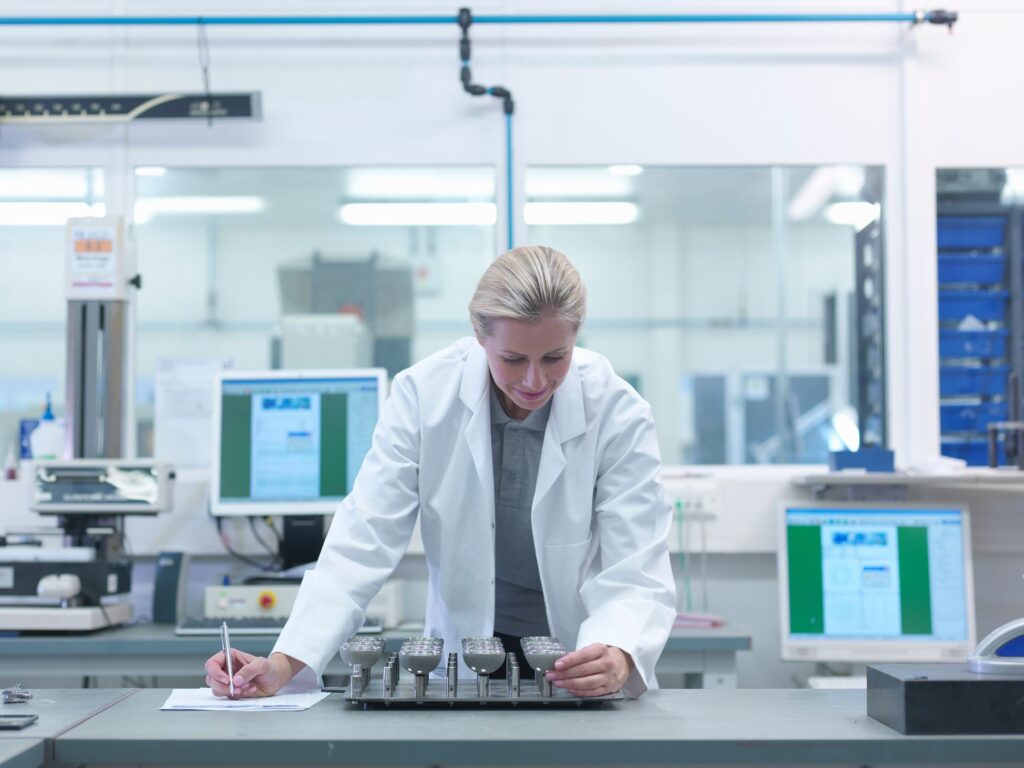Biomedical Engineering Advancements in Medicine
Examining the Most Recent Developments in Biomedical Engineering to See How the Future of Medicine Is Here
The exciting nexus of biology and engineering known as biomedical engineering is transforming medical diagnosis, treatment, and prevention. This field has enormous potential to change healthcare and enhance human health with ongoing innovation. Now, let’s examine five of the most fascinating recent developments in biomedical engineering and how they are being used in medicine
Biomedical Engineering Advancements in Medicine
Table of Contents

- Tissue and Organ Engineering: Developing Substitute Components
The goal of tissue and organ engineering is to produce functioning organs and tissues that the body may use to replace or mend damaged ones. In the far future, imagine a world in which recipients of organ transplants may obtain customised replacements, doing away with waitlists and greatly enhancing patient outcomes.Biomedical Engineering Advancements in Medicine
- Applications: There are a tonne of options with this technology. It can be applied to the development of skin grafts, which help burn patients heal more quickly and leave fewer scars.
- heart valve: replacements to fix damaged or broken heart valves and get the heart back to normal.
- cartilage restoration for people with injuries or degenerative conditions of the joints.
- possibly even entire organs: such as the liver and kidneys, providing patients suffering from organ failure with a permanent fix.
- The process of bioprinting Printing Medicine’s Future
Using 3D printing processes, bioprinting is a revolutionary technology that builds complex structures out of living cells and biocompatible materials. This makes it possible for researchers to create complex tissue models and, in the future, to print organs and tissues specifically for transplant recipients.
Uses: The promise of bioprinting goes beyond organ printing:
Biomedical Engineering Advancements in Medicine
- Tissue engineering: Personalised medical solutions can be achieved by using bioprinting to generate intricate tissue models for drug testing and illness study.
- Drug testing: Bioprinted tissues can provide more realistic and accurate platforms for drug testing, which will speed up and improve the efficacy of medication development.
- Personalised medicine: Bioprinting has the potential to transform the transplantation industry by producing customised tissues and organs that are suited to each patient’s unique need.
- Interfacing Brain and Computer: Overcoming Communication Obstacles
Bypassing the conventional paths of nerves and muscles, brain-computer interfaces (BCIs) allow direct communication between the brain and external equipment. With the help of these interfaces, people can operate external devices with just their thoughts, opening up new avenues for therapy, rehabilitation, and communication.Biomedical Engineering Advancements in Medicine
Applications: There are several possible uses for BCIs, including
Biomedical Engineering Advancements in Medicine
- Helping those who are paralysed: Brain-Computer Interfaces (BCIs) can help people who are paralysed regain control over their movement and communication, increasing their independence and quality of life.
- Restoring lost sensory functions: With the use of this technology, people may be able to regain their hearing or vision, which will open up new avenues for interaction with the outside world.
- Neurological disease treatment: Brain-computer interfaces (BCIs) have promise for the creation of novel therapeutic strategies aimed at addressing neurological conditions such as epilepsy and Parkinson’s disease.
Biomedical Engineering Advancements in Medicine
- Editing Genes: Rewriting the Life Code
With the use of this potent technology, scientists may precisely alter an organism’s genetic code. This creates opportunities for fixing genetic mistakes and possibly healing a number of hereditary illnesses that were incurable before.
- Applications: The use of gene editing has the potential to treat a wide range of hereditary problems, such as:
- With the use of this technology, the genetic abnormalities causing the crippling lung disease cystic fibrosis may be corrected.
- Sickle cell anaemia: Permanently changing the genes causing sickle cell disease using gene editing could provide a treatment for this chronic condition.
- Additional hereditary conditions: Researchers are investigating the use of gene editing to treat muscular dystrophy and Huntington’s disease, among other hereditary disorders.
- Nanomedicine: The Enormity of Microparticles
Nanoparticles, which are extremely small particles, are used in nanomedicine for a variety of medical purposes. These nanoparticles have special qualities that can be used for novel diagnostics, enhanced imaging methods, and targeted medication delivery.
- Applications: A number of breakthroughs in nanomedicine are possible.
- Targeted medicine delivery: By delivering medications straight to damaged cells, nanoparticles can reduce adverse effects and boost the effectiveness of treatment. This is especially helpful in the treatment of cancer, since conventional chemotherapy damages healthy tissues.
- Better imaging methods: By acting as contrast agents, nanoparticles can be designed to improve the clarity and precision of medical imaging methods like CT and MRI scans, enabling earlier and more accurate diagnosis.
- Novel diagnostic instruments: The development of nanobiosensors can identify particular disease biomarkers, providing quick and non-invasive diagnostic techniques for a range of medical disorders.
Biomedical Engineering Advancements in Medicine
These are but a handful of the many fascinating developments in biomedical engineering that are reshaping medicine in the years to come. We may anticipate many more ground-breaking discoveries in the years to come as research in this area pushes the bounds, ultimately leading to a healthier and brighter


